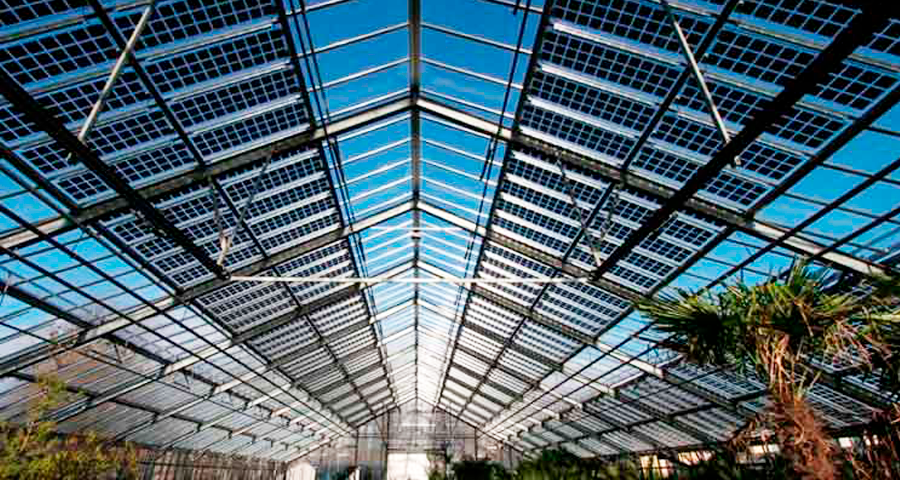US scientists study energy neutrality in greenhouses

A new study by engineering, plant, and physical biology researchers at North Carolina State University has concluded that the use of transparent solar panels to collect energy, mainly from the wavelengths of light that plants do not use for photosynthesis, could contribute to energy neutrality in greenhouses.
“Plants only use some wavelengths of light for photosynthesis, and the idea is to create greenhouses that generate energy from that unused light while allowing most of the photosynthetic light band to pass,” stated Brendan O ‘ Connor, the author of the study and associate professor of mechanical and aerospace engineering at NC State.
“We can do this by using organic solar cells, as they allow us to adjust the spectrum of light absorbed by the solar cell. However, we didn’t know how much energy a greenhouse could capture using these organic wavelength-selective solar cells.”
The researchers used a computational model to estimate how much energy a greenhouse could produce if it had semi-transparent organic solar cells on its roof and if that would be enough energy to compensate for the amount of energy the greenhouse requires to operate effectively. The model was developed to estimate the use of energy for greenhouses that grow tomatoes in locations in Arizona, North Carolina, and Wisconsin by taking into account the compensation between the amount of energy generated by solar cells and the amount of light the photosynthetic band allows to pass.
In addition to generating energy, the solar cells used for this analysis are effective insulators, since they reflect infrared light. This helps keep the greenhouses cooler in the summer while catching more heat in the winter.
The end result is that, for example, in Arizona, greenhouses could become energy neutral (without the need for an external energy source) and at the same time block only 10% of the photosynthetic light band. In North Carolina, a greenhouse could become energy neutral and block 20% of photosynthetic light. In Wisconsin, however, greenhouses cannot become neutral using semi-transparent solar cells; keeping the greenhouse warm in winter requires too much energy, the study states. However, the solar cells can meet up to 46% of the energy that the greenhouse needs.
The article, “Achieving Net Zero Energy Greenhouses by Integrating Semitransparent Organic Solar Cells,” was published in Joule.
Source: www.freshplaza.com


